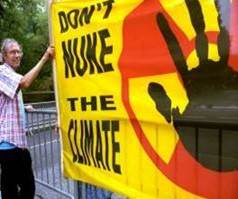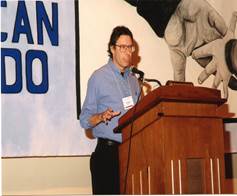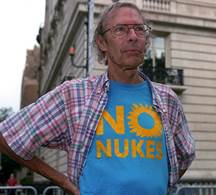Apologies for multiple posts—You were on Michael’s Nov 2014 LIFETIME ACHEIVEMENT AWARDS LIST





Dear Friends of NIRS,
We have very sad news to share. Our colleague and friend, and longtime leader, Michael Mariotte died yesterday. As you all know, he has waged a brave struggle against pancreatic cancer for three years, but we understand that this could still come as a surprise. It has hit us all very hard. Michael's condition worsened very quickly over the last couple of weeks, and even more so in recent days. He was so committed to our work, that he continued right up until the last week or so, giving many the impression that he was going strong.
Though the last few months were very difficult for him, he died peacefully at home and his family was with him. He is survived by his wife Tanya, their young daughters Zoryana and Kateryna, his friend and ex-wife Lynn, and their children Nicole and Richard, as well as his sister Julie, brother Jeff, and sister-in-law Marsheila.
Michael did not want to have a funeral - it was not his way. Rather, he has asked friends to gather and do something fun in his memory. That was his way, to honor life by living and enjoying it to the fullest.
And, of course, by fighting for it. Most of us know him originally and primarily as both parts colleague and comrade, in our work to protect life and to make the world a safer, better, and more just place in which to live.
PLEASE JOIN Michael’s family, music and work colleagues, friends, neighbors and all to hug, cry, and share memories at the
Hyattsville BUSBOYS and POETS, 5331 Baltimore Avenue, Hyattsville, MD 20781
Gathering Thursday MAY 19th from 4:00 -8:00 PM
with the Program beginning at ~ 5:30.
We are also planning to have an event in a month or so, to give the wider NIRS community an opportunity to come together and celebrate Michael and his work, and to chart our path forward. We have a lot of work to do, and Michael would not have wanted us to skip a beat. One of the last things we spoke about on Friday was the latest reactor closure announced last week -- Fort Calhoun, in Nebraska. He knew the struggle had to go on without him, and was glad to know one more reactor is shutting down.
If you would like to send a message of support to his family, we encourage you to do so. Michael's family has a lot to deal with in the wake of their loss, so NIRS has offered to collect and pass on messages from the activist community. We will be collecting posts from Facebook, which is already filling up with wonderful messages. You can also send an email to us at nirs@nirs.org, or a card or letter to NIRS's office: 6930 Carroll Ave., Suite 340, Takoma Park, MD 20912.
We will be posting a public statement shortly, and notifying the broader community of NIRS supporters and activists. Please feel free to let people in your networks know.
We know this is difficult news. So many of you were much more than colleagues. If you have any questions, don't hesitate to contact us.
With deep regret, warmest regards, and lots of spunk,
Tim Judson, Executive Director
on behalf of NIRS Staff and Board of Directors
Diane D'Arrigo, Radioactive Waste Project Director
Denise Jakobsberg, Administrative Coordinator
Mary Olson, Southeast Director
Chris Williams, Board Chair
Timothea Howard, Treasurer
Susan Alzner
Louis Clark
Peer de Rijk, WISE-International
Bob Eye
Allison Fisher
Daphne Wysham
Elizabeth May, ex officio
Vladimir Sliviak, ex officio





























